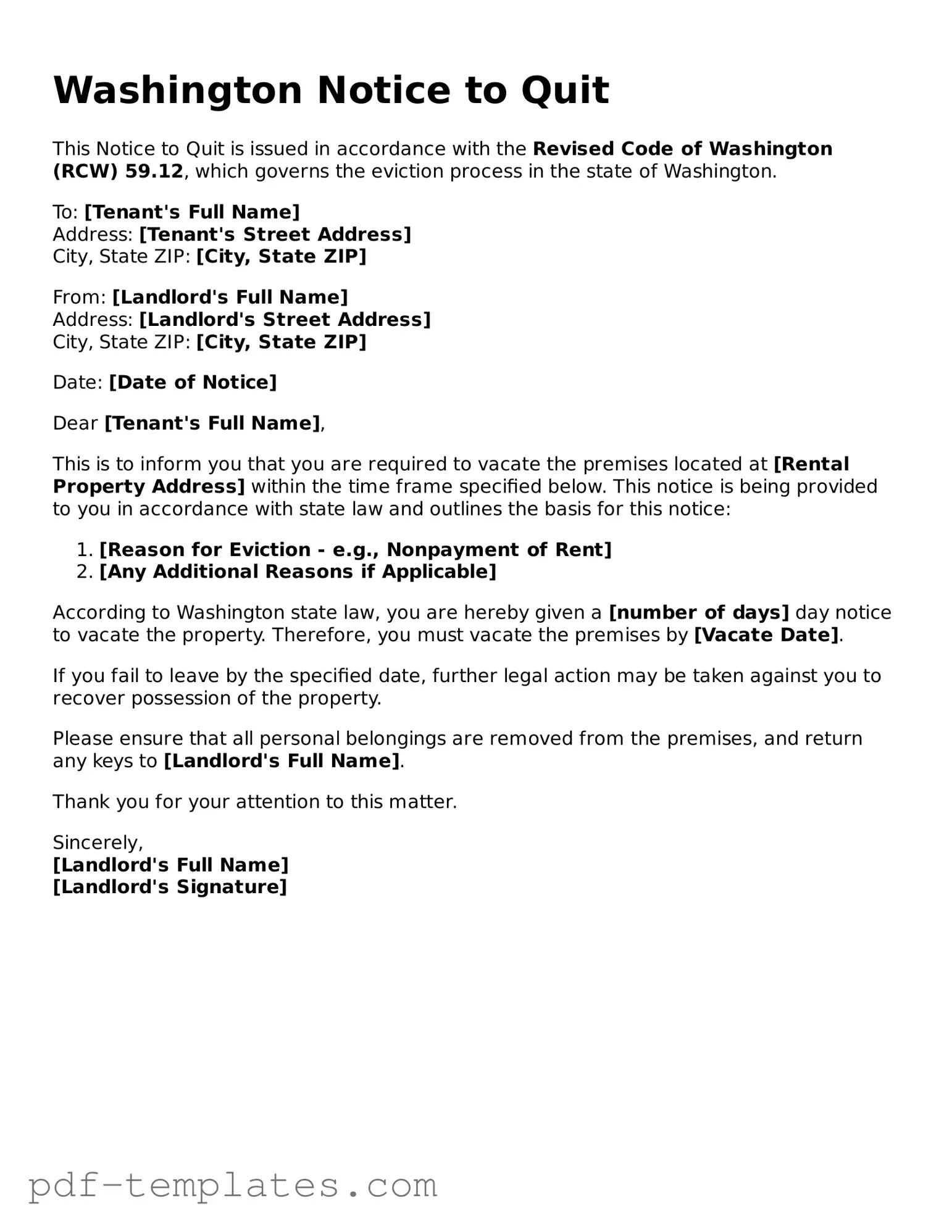The Eviction Notice is a document that property owners use to inform tenants of their intention to terminate a lease agreement. Similar to the Washington Notice to Quit, it outlines the reasons for eviction and provides a timeline for the tenant to vacate the premises. Both documents serve as formal notifications and must comply with state laws regarding notice periods and required information.
The Lease Termination Letter is another document that shares similarities with the Washington Notice to Quit. This letter is typically used by landlords to notify tenants that their lease will not be renewed at the end of the term. Like the Notice to Quit, it must clearly state the effective date and any relevant reasons for termination, ensuring that tenants have adequate time to prepare for their move.
The 3-Day Notice to Pay Rent or Quit is a specific type of eviction notice that landlords can issue when tenants fail to pay rent. This document is akin to the Washington Notice to Quit in that it demands action from the tenant within a specified timeframe. Both documents emphasize the urgency of the situation and require the tenant to either pay overdue rent or vacate the property.
A Cure or Quit Notice is issued when a tenant violates a lease agreement but has the opportunity to remedy the situation. This document is similar to the Washington Notice to Quit as it provides a clear timeframe for the tenant to correct the issue or face eviction. Both notices aim to ensure that tenants understand the consequences of their actions and the steps needed to avoid losing their housing.
The Notice of Default is a document used in the context of mortgage agreements, notifying borrowers of their failure to meet payment obligations. While it differs in context, it parallels the Washington Notice to Quit in its purpose of alerting individuals to serious issues that require immediate attention. Both documents serve as a warning that further action may be taken if the situation is not resolved.
The Notice to Vacate is often used in month-to-month rental agreements to inform tenants that their rental period will end. Similar to the Washington Notice to Quit, this document specifies the date by which the tenant must leave the property. Both documents provide clarity and structure, ensuring that tenants are aware of their responsibilities and timelines.
The Termination of Tenancy Notice is a formal notification that landlords provide to tenants to end a rental agreement. Like the Washington Notice to Quit, it details the reasons for termination and the date by which the tenant must vacate. Both documents must adhere to state regulations regarding notice periods and content requirements.
In the context of legal documents related to tenancy, it's crucial to ensure all forms are accurately represented, and for those seeking information on relevant paperwork, All California Forms can be an invaluable resource to explore further options and requirements.
The Notice of Lease Violation is issued when a tenant breaches specific terms of their lease. This document is comparable to the Washington Notice to Quit as it outlines the violation and the potential consequences if the issue is not resolved. Both notices emphasize the importance of compliance with lease terms and provide a clear path for remediation.
The 30-Day Notice to Quit is a common document used in many states to inform tenants that they must vacate the property within 30 days. This notice is similar to the Washington Notice to Quit in that it provides a specific timeframe for tenants to leave. Both documents are essential in the eviction process and ensure that tenants have sufficient notice to find alternative housing.
Finally, the Rent Increase Notice is a document that landlords issue to inform tenants of a change in rental rates. While it does not serve the same purpose as the Washington Notice to Quit, it is similar in that it requires tenants to take action based on the information provided. Both documents are critical in maintaining clear communication between landlords and tenants regarding their rights and responsibilities.
